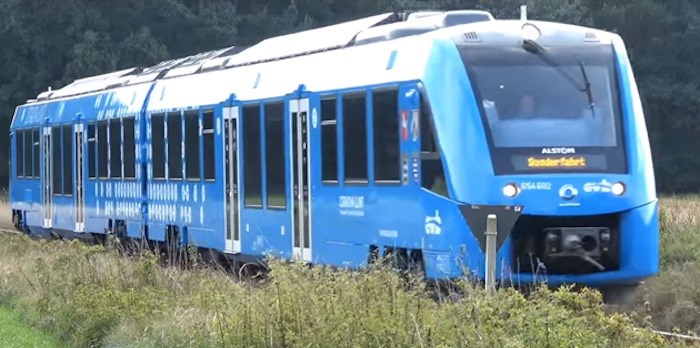A group headed by a Kelowna engineering professor wants to see a rail link running from Kamloops, through Kelowna and to Osoyoos, potentially linking up with Amtrak just across the American border.
 Dr. Gord Lovegrove says trains in Germany like this one are similar to what he envisions coming to the Thompson-Okanagan. (via Unimedien/YouTube)
Dr. Gord Lovegrove says trains in Germany like this one are similar to what he envisions coming to the Thompson-Okanagan. (via Unimedien/YouTube)
Dr. Gord Lovegrove with the University of British Columbia's Okanagan Campus says the idea started as something he dreamt of for his children or children's children, but it's picked up steam recently. Now, he and others are starting a formal group to pitch the idea to local governments, venture capitalists and stakeholders.
"Eventually, somebody is going to look at this and say, 'Yeah, I'll take a risk,'" he tells KamloopsMatters.
Lovegrove envisions an electric train tram, similar to what's seen in Europe, particularly in Hamburg, Germany. Train trams there are powered by fuel cells and can travel highway speeds on rails embedded in highways. They're also able to climb hills.
"It's got a lot of versatility," he says.
Infrastructure for the mega project wouldn't be as burdensome as some might expect. Lovegrove points out rail already runs between Kamloops and Vernon. Beyond that, tracks could follow highways or roads once a route is determined, meaning no property acquisition.
Right now, he estimates it could be done for $1.5 billion, assuming it costs about $10 million per kilometre, but he thinks it could come in under $5 million per kilometre depending on certain things, like a new bridge in Kelowna (he isn't convinced a new bridge would be necessary).
To fund the project, Lovegrove says the most likely option would be a public-private partnership. A company would build the project, run it and collect revenues, while the government would deal with land issues. He imagines it could be a potential boon for smaller stops along the route, bringing people to downtown areas. Lovegrove puts a rough ticket estimate at $40 to $50, depending on the start and end points.
There are a bunch of reasons to pursue the project, he says, from the environmentally-friendly technology, to the ability for people without cars to move along the north-south corridor, to the fact the trains run nearly silent.
After talking to stakeholders in the tourism and wine industries around Kelowna, Lovegrove says there are a myriad of ideas ranging from wine tours heading south from the Rocky Mountaineer, to connecting the new line to Amtrack, to creating a new route to Seattle with a loopback through Vancouver. Anyone attending events in other communities would also have an easy way to and from their venues.
https://www.youtube.com/watch?v=TvnEvJ3M5sE
He points out it takes advantage of B.C.'s advanced technology sector as well, with fuel cells powering the locomotives.
"Canada is the leading fuel cell manufacturer in the world," says the professor.
The project is still in the infancy phase. Lovegrove is looking at making a video to help visualize the project, which he says has proven to be a barrier. People interested aren't sure about it without seeing how it might look.
"We're at that point now where it's time to put your money where your mouth," he says. "We're definitely going to need to get some visualizations."
Lovegrove estimates it'll cost $30,000 to create a video so the group can pursue venture capitalists. While Vancouver's SkyTrain is similar to his idea, he says Toronto's new trams are closer (which work on the city's existing streets among cars), but really Hamburg has the technology he'd like to see used here.
He hasn't been to Kamloops to discuss the project with local administration or politicians, partly because the city already has some rail infrastructure in the city's core. Currently, he's focused on the Okanagan meetings, as well as the forming of the group.



